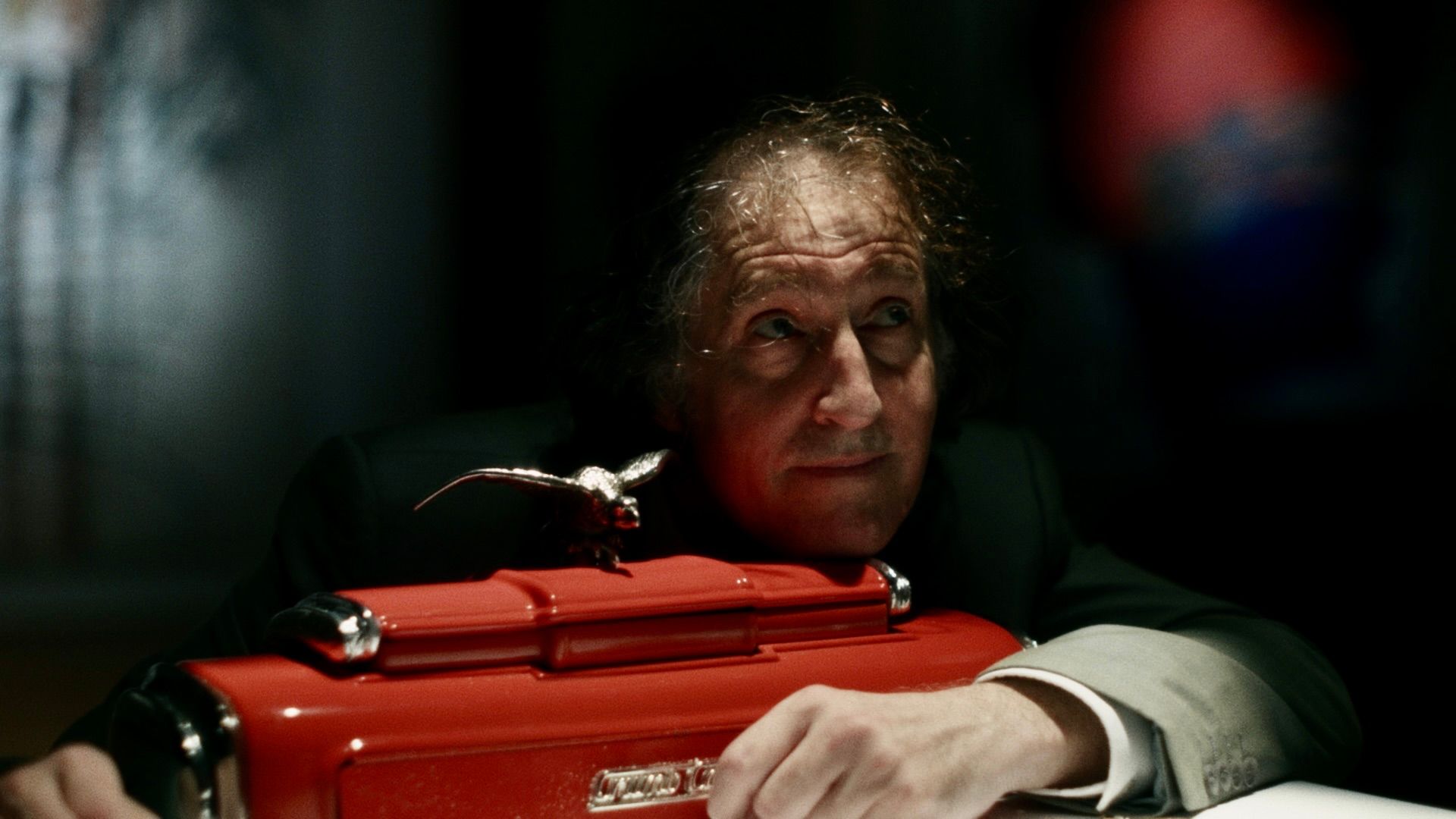There are characters we hate, from Amon Göth in Schindler’s List to Cal Hockley from Titanic. Then there are characters who are simply so annoying that our dislike for them ruins the movie, including, but hardly limited to, Jar Jar Binks in Star Wars: The Phantom Menace and Mutt Williams from Indiana Jones and the Kingdom of the Crystal Skull. To this list we can add at least one of the only four major characters in Crumb Catcher, a home invasion thriller and black comedy with too little storytelling credibility. It’s the kind of film populated by those whose actions only occasionally strafe the realm of recognizable human behavior.
Such issues would be easier to ignore had writer/director Chris Skotchdopole, in his debut feature, paid more than lip service to the sociopolitical themes poking through his weighty screenplay. There’s an intriguing middle-class desperation in the way sweaty blabbermouth John (John Speredakos) and his wife Rose (Lorraine Farris) go to increasingly disturbing lengths to pitch his titular invention to Shane (Rigo Garay), a Latino author who fears that his tragic upbringing is being exploited by his publicist wife Leah (Ella Rae Peck) to sell his upcoming memoir.
But Skotchdopole proves too undisciplined a storyteller and these wisps of interesting ideas are buried under mountains of dialogue and plot twists. Aiming at too many targets and then firing wildly and limply at them, Crumb Catcher is a rambling and muddled attempt to approximate the result had Funny Games director Michael Haneke helmed a remake of Who’s Afraid of Virginia Woolf.
Newlyweds Destined for Trouble
Were Skotchdopole to get a second bite at the directing apple (and he should), he’d be better off directing someone else’s script. Introduced in the opening scene posing for photos at their fancy wedding, newlyweds Shane and Leah seem so poorly matched that one can only conclude it’s a marriage of career opportunity, especially since they’ve both toiled for five years to bring his novel to bookstores. Indeed, the chemistry between Garay and Peck is so slight that we can only assume it’s on purpose, which means we not only don’t know Shane and Leah, but we’re given no opportunity to connect with them.
The only moment that approaches a deeper exploration of their dynamic comes during their honeymoon foreplay when Shane, increasingly riddled with doubt over releasing a memoir that may embarrass his family, role plays as a tough guy who, disarmingly, still asks for Leah’s help to open a bottle of champagne.
Most of the action takes place in their gorgeous honeymoon cabin lent to the couple by Leah’s boss (the film features lush exterior locations in New York’s Dutchess and Putnam Counties). Cinematographer Adam Carboni makes the most of the limited space although his swirling camera and Skotchdopole’s occasionally frantic editing overcompensates and can be disorienting.
But confusion is definitely on the menu when an unexpected late-night knock at the door reveals the appearance of John, a rumpled and fast-talking mess of a waiter who has driven all the way up from the wedding to hand-deliver the cake topper, the victim of a wedding day mix-up. With his wife Rose in tow, John is the movie’s wildcard and prime motivator of the action.
A Villain Who’s Crazy, Cringey and Won’t Shut Up
To his credit, Speredakos goes all-in, fully committing to John’s endless high-strung blathering as he rudely ingratiates himself into the cabin as if Willy Loman was in the middle of a Westchester County psychotic breakdown and needed to use the bathroom. Still, the character is ridiculous within the context of the film’s otherwise realistic environment and Rose isn’t much better, with Farris giving the “more is more” performance presumably requested of her.
All this would suggest that John is some sort of symbolic Beelzebub figure, tempting the troubled couple with an elaborate presentation — complete with prop food and multicolored displays — for his game-changing invention: a cherry red contraption that sweeps crumbs off dining room tables. Instead, John and Rose are just aggressively industrious grifters and if the newlyweds won’t fork over $50,000 to bankroll the Crumb Catcher, Rose isn’t above blackmailing Shane with an incriminating wedding day video.
Crumb Catcher is the type of film where, if the characters weren’t in a movie, they’d probably have avoided the whole situation. But Shane and Leah, she being the smarter of the two, act in accordance with the necessities of the genre, meaning lots of conversations about calling 911 without actually calling 911. Even if such clueless behavior is part of the fun in these types of films, Skotchdopole takes it to extremes and the high-speed chase that precedes the climax stretches, then snaps, credibility.
Where Are the Sympathetic Characters?
It would be disingenuous to not admit that Skotchdopole maintains a certain level of tension throughout, which is impressive considering he’s given very little help by the lackluster score. But such well-modulated screw-turning also suggests he has little interest in exploring the racial and class distinctions that would make the Latino Shane the unfortunate target of his Waspy wife’s career ambitions, and John a pathological striver whose desire to partake of America’s capitalist riches earns a modicum of our empathy.
Instead, he’s the most unlikable character in a film where no one is likable nor is anyone’s fate worth caring about. Although if one learns anything from Crumb Catcher, it’s that when a maniac is lumbering up your driveway for the umpteenth time, for goodness’ sake lock the front door. From Music Box Films, Crumb Catcher is now available on digital platforms like YouTube, Google Play, Apple TV, Fandango at Home, and through Prime Video below:
